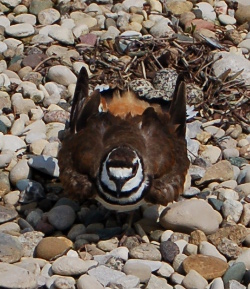
A garden journal.
You know it’s a good idea. “Now when did those ‘Biokovo’ geraniums of mine bloom again?” you think. “If I had jotted it down, I would know whether or not they would flower with this Twilite Prairieblues™ baptisia I had to get.”
You resolve to keep better records next year.
All winter you are stuck inside, dreaming and making plans for the garden, flipping through plant catalogs and sketching. During this long period of banishment from any real work in the garden, you grow frustrated with your inability to remember when you sowed that spinach last year, when the wild blackcap raspberries got ripe, and what exactly bloomed when. With the determination of a new gym member in January, you vow to follow through with your journaling come spring.

The first signs of renewed activity–I won’t say “of spring,” because they start to appear even before then–show up gradually, and you relish and record every moment. The first witchhazel flower. Winter aconite. Will the parrotia bloom this year? Snowdrops. Reticulated irises. Pussy willows. Red maples and forsythia. Crocuses.
But then there comes a point, around the first of April (at least in the Lower Midwest), when all hell breaks loose. Plants seem to grow perceptibly bigger in the space of one day. New plants come into bloom in rapid-fire succession; the garden all of a sudden is bustling. And there is so much to do! Plants must be moved before it is too late, weed populations checked, early crops sown. If you’re like most gardeners, your journal entries begin to get spotty.
Or, maybe you do make it through a hectic spring and manage to stick with it a while longer. But in June it gets hot, and by July you begin to lose your resolve. The cats lay around the house as if they’d been shot, and you don’t feel much livelier. If you work outdoors, or even just work in your garden a lot, you are worn out at the end of the day and want to go to bed early. The journal fizzles out.
For me it was the opposite.
Once I started noting bloom times, I couldn’t stop. Not satisfied with flowering records, I soon began to track plants’ fruiting and fall color dates, and the activity of birds, butterflies, and all manner of creatures that crawled, flew, slinked, or scurried as well.

I noted when pawpaws began to bloom, their funny triangular flowers smelling like Elmer’s Glue. When the serviceberries began to ripen (not that the birds would let me have any). When the smoketrees would turn rainbow-sherbet colors: raspberry, orange, lemon, lime. When ‘Morning Light’ maiden grass plumes began to appear, as shiny and coppery as new pennies. When katsura leaves began to smell like toasted marshmallows. When fireflies began their slow blink and when they disappeared. When killdeer began faking their broken wings. When the annual cicadas emitted their first raspy, buzzing mating calls.
Ah, the cicadas.
There is a word for my affliction. It is called phenology: the study of the timing of nature’s cyclical events. The word gets reintroduced into the vocabulary every 17 years in the Ohio Valley when the periodical cicadas of Brood X emerge, in one of the most mind-blowing phenological events in the world. (The last time was in 2004.) Somehow, mere insects, having spent 17 years as nymphs underground, “know” to swarm up from the ground at once, as if on cue. They engage in a frenzy of lovemaking, lay eggs, and then die–every one. The sound of their mating calls rises to a roar; it is an unforgettable thing to see and hear.

Keeping a journal of these backyard dramas, both big and small, that I have witnessed over the years has given me a greater appreciation of nature’s rhythms and a more finely-tuned awareness of what’s going on in the garden. Knowing what happens when keeps me from missing out on those events that I look forward to each year: baby oak leaves emerging fuzzy and miniature, the first returning hummingbirds, ripe persimmons knocked from the tree with a well-aimed stick, the orange and green goblet-flowers of tulip poplar unfurling high in the trees. The characters in the stories become old friends who usually drop in at the same time each year.
And, I also know that this year I need to sow my spinach earlier, because it will begin to bolt around the 10th of June, I will look for the blackcaps a little later than that (in mid-June), and yes, ‘Biokovo’ geranium will be a fine companion for that baptisia.


I have pretty much given up on gardening here in the north woods. Not much success. I’m loving your letters. Thank you. Hope you get your book published. We definitely will be one of your first buyers.
Yeah, Northern Wisconsin is pretty limiting. Plus you have whole herds of deer. Thanks for the support!
Great article, Amy! Sure did need a vision of Spring to get out of this winter funk and remember this snow will end at some point. I know the book will be a great success!
Your geeky co-hort,
Sue
Sue, I feel for you and all my friends back in the Midwest. I won’t tell you how warm it got here in Portland today. I will say that I saw pansies and primroses on sale last week at the grocery store and thought about getting some. Glad you liked the article! I’ve got a lot more to share. Sending warm thoughts… Amy